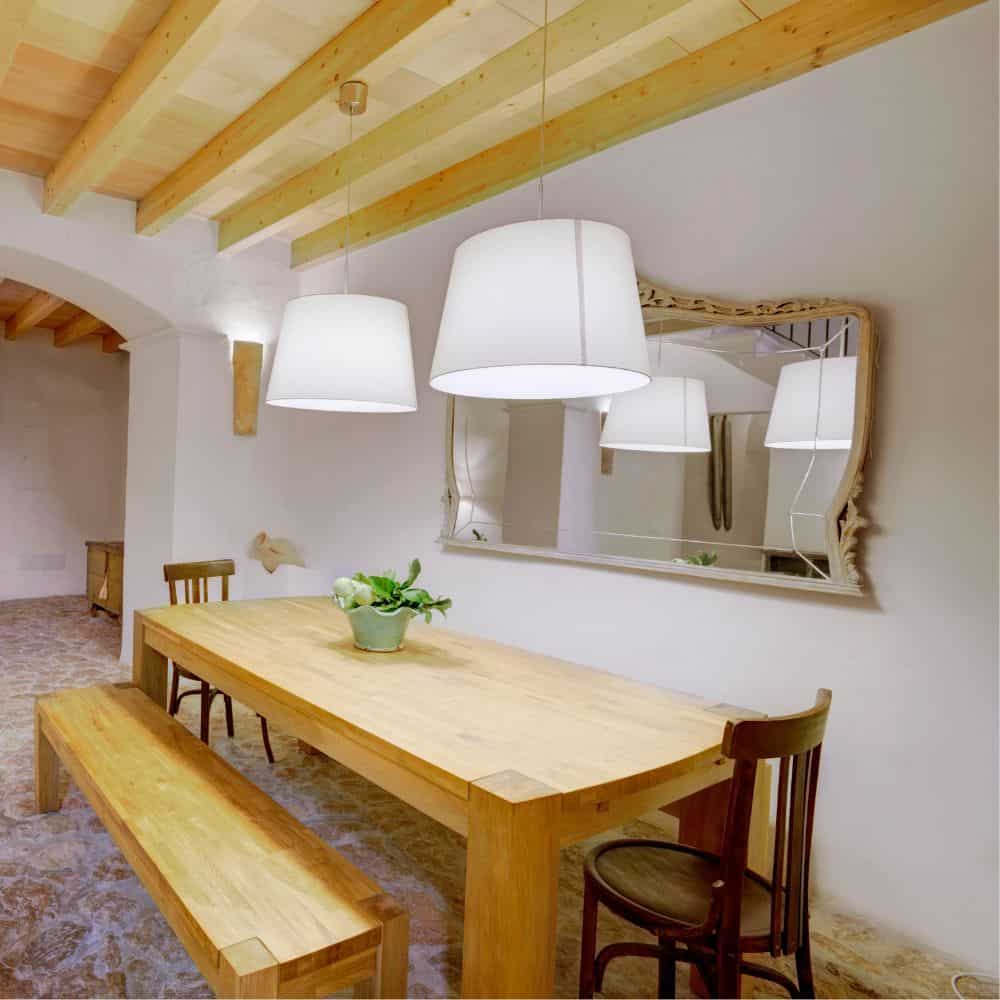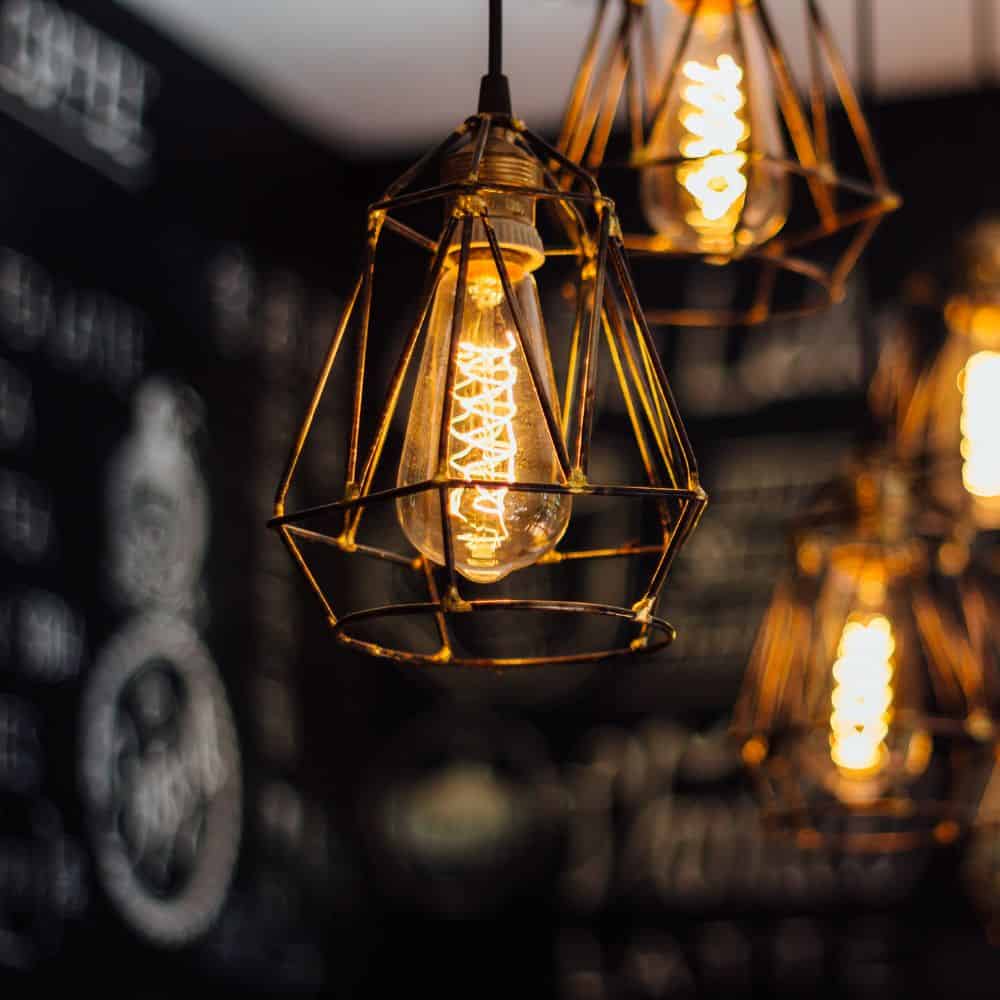In this article, we’ll discuss the different layers of light and the three different types of indoor lighting so that you can choose the best lighting for your home!
Like the majority of people, you probably don’t think much about indoor lighting techniques. You’re content as long as the light turns on every time you turn the switch.
But why accept mediocre lighting when you can have interior illumination that facilitates nearly all domestic tasks and increases comfort and safety? In the long run, you might even end up saving money.
Layers Of Light – How To Design Indoor Lighting
Ambient, task and accent are the three types of lighting. The types you require will depend on the size and style of your space. In order to adequately illuminate a room, you generally need at least two layers. Sometimes all it takes to significantly improve your home’s lighting quality is to just add another layer of light.
Ambient Lighting
Every room needs ambient lighting, often known as general lighting. Overall, it offers an adequate amount of light. The best place to start when lighting a room is with ambient light sources, which are often above lighting such as ceiling light fixtures.
The following are some ambient light sources to take into account while designing your indoor lighting schemes:
- Ceiling fans (check out the best outdoor ceiling fan).
- Chandeliers
- Flush mount or semi-flush mount ceiling fixtures
- Pendants
- Recessed lighting
- Torchiere lamps
- Track lighting
- Vanity lighting
- Wall sconces
Task lighting is key to enabling you to see what you’re doing while you’re performing a task. In areas like the kitchen, workplace, and bathroom, it provides the bright, direct light required for intensive tasks, such as reading, cooking, prepping, and applying makeup.
Here are some task lighting sources to take into account for your indoor lighting design ideas:
- Desk lamps
- Island or mini pendants
- Track lighting
- Under-cabinet lighting
- Vanity lighting
- Work lamps
Accent Lighting
Accent lighting enables you to draw attention to intriguing elements in your home’s interior design, like a painting or a mantel. It can also be used to supplement the room’s ambient illumination as a secondary light source.
Accent lighting aids in illuminating areas of the room where ambient light is unable to reach. Ambient lighting primarily provides overhead illumination. Recessed lighting, track lighting, and wall sconces are accent lighting options to take into account for your lighting design.
3 Different Types Of Indoor Lighting (Most Common)

The three most common types of lighting are traditional incandescent lamp lighting, halogen lighting, and LED lighting.
Incandescent Lamp
The most popular and widely used source of light today is an incandescent lamp. With current technology, they are regarded as being inefficient. They are starting to be replaced because of the lamps used.
They have the lowest luminous indoor lighting energy efficiency and the shortest lifespan of about 1000 hours. This is because the electricity they use only converts 15% of it into light, 25% into heat energy, and the remaining 60% into non-perceptible radiation, which eventually becomes heat.
The fact that it does not provide very good color reproduction is another one of its drawbacks. Nevertheless, because of its low cost and the warm tone of light, it is the most often used type of lighting.
Halogen Lighting
The halogen bulb operates slightly better than an incandescent lamp, and it has a longer useful life of up to 4000 hours. It has many benefits over conventional incandescent lighting. They need 30% less electricity to emit a 30% whiter and brighter light and are more effective.
They are energy-efficient indoor lighting, significantly smaller than a typical incandescent of the same wattage, and do not lose light intensity over time.
These lights offer more service hours, and the majority of the models are connected directly to the household electrical distribution network, which is a benefit that should be highlighted.
Halogen lamps use more energy by dissipating heat into the environment than by creating light, even if they are more cost-effective. However, these drawbacks are small, similar to those of conventional incandescent lamps. The worst aspect of this sort of illumination is that it becomes overheated.
LED Lights
In comparison to incandescent and fluorescent light sources, LEDs offer a number of benefits, including:
- Low energy consumption
- Longer lifespan
- Reduced size
- Durability
- Reduced heat output
- Absence of mercury (which is highly poisonous)
Additionally, they are more reliable and long-lasting in the majority of hues (apart from blue LEDs). They do not suffer from intermittent lighting (which does not shorten their average life) and have a better color rendering index.
Unlike high-power luminaires, LEDs have the advantage of having a very fast ignition time. It is important to note the wide range of colors produced by LEDs. This has allowed for the development of new bicolor and tricolor electronic displays as well as a significant expansion of the domestic color palette.
The sole drawback of LEDs with enough power for interior illumination is that they are quite expensive to purchase initially. However, due to this type of luminaire’s extended lifespan, it pays for itself and ends up being less expensive than the competition.
How To Get Good Indoor Lighting

Any place, regardless of size, can function differently depending on how it is lit. A well-positioned lamp or ceiling fixture can produce calming and useful ambient light. Your home’s rooms should be lit according to the various functions they fulfill.
While some spaces, like the kitchen or laundry room, benefit more from indirect, general lighting, others, like living rooms, are better suited for task-oriented lighting. This emphasizes that each space should have a different type of lighting fixture, level of light, and placement of lighting.
